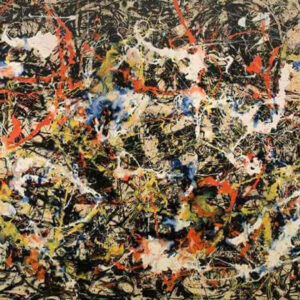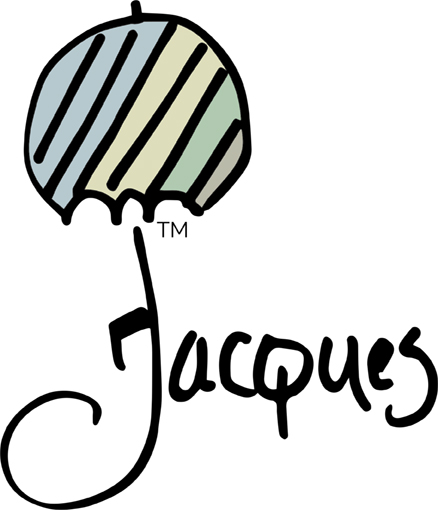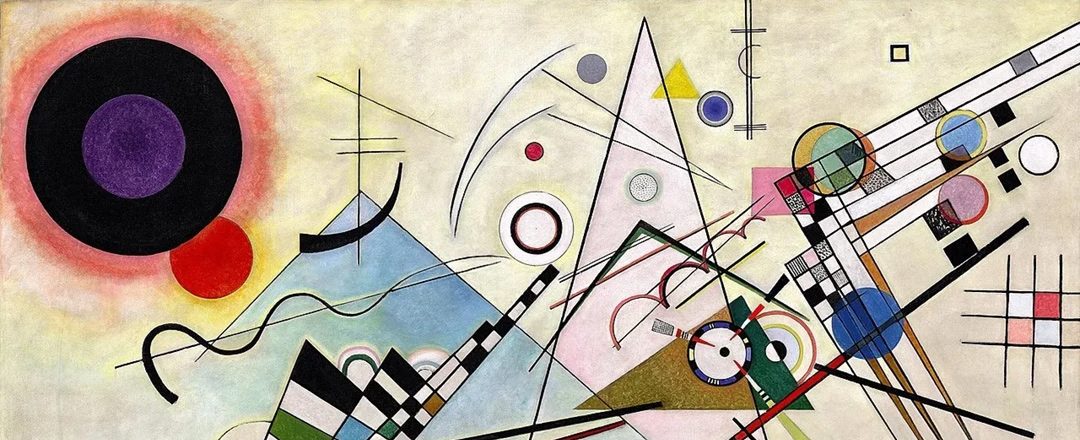“There is no abstract art. You must always start with something. Afterward you can remove all traces of reality.”
Pablo Picasso
 The Tate: “A Brief History of Abstract Art with Turner, Mondrian and More” [*]
The Tate: “A Brief History of Abstract Art with Turner, Mondrian and More” [*]
“If you put the word ‘abstract‘ into a thesaurus some of the similar words suggested are: theoretical; conceptual; intangible. Among its many antonyms (or words with opposite meanings) is ‘simple’. The word abstract suggests something vague, difficult, not easily grasped. But abstract art doesn’t have to be any of those things. On the contrary, an artist working in an abstract way might want to make something striking and beautiful, whisking us away from the humdrum realities of the everyday. In other words, they might be interested in art for art’s sake, pure and simple. A raft of exhibitions show that far from being a hard to describe movement set apart from the mainstream, abstraction in its various forms has produced some of the most memorable, influential and best loved art of any era.
Wassily Kandinsky is often regarded as the pioneer of European abstract art. Kandinsky claimed, wrongly as it turns out, that he produced the first abstract painting in 1911: ‘back then not one single painter was painting in an abstract style’. But we could argue that the roots of this movement are much deeper (and in fact it seems the Neanderthals where ahead of the game in their cutting of abstract lines into stone). If we look at some of the later works of J.M.W. Turner for example, some of his landscapes could be seen as abstract. What might be traditionally recognisable forms in the hands of another painter are transformed by sublime elements, and overwhelming suggestions of light and scale by Turner.”
*Quotation above is taken directly from the website cited and is the property of that source. It is meant to inform the reader and to give credit where it is due.
 Artsier Magazine: “A Short History of Abstract Art” [*]
Artsier Magazine: “A Short History of Abstract Art” [*]
“To understand the evolution of an artistic movement, the diversity of artists’ styles and their influences, you need to take a look backwards. Here, the focus is on abstract art: Artsper sums up its history for you to read before your next exhibition!
Eastern European beginnings: Abstract art was born at the beginning of the 20th century. At this time the artistic landscape was predominantly made up of fauvism, cubism and figurative expressionism. This type of art is marked by its freedom of color, shapes and of course: it’s subject. So much so that little by little, the pictorial aspect was completely abandoned purely for form. Boldness and experimentation with color characterizes this period as the artists began to free themselves from the constraints of academia.
The beginnings of abstract art are hard to pinpoint. In fact, we can see different artists with varying styles appearing simultaneously, each one bringing their own personal touch to the definition of what constitutes “abstract”. But if a date for the beginning of abstract art had to be given, 1910 can be agreed upon (almost) unanimously. This date coincides with the first abstract watercolor by Vassily Kandinsky. The Russian painter – linked to the avant-garde movement in Eastern Europe – was the first painter who used no formal composition. This is how abstract art came to be defined: as art which does not represent reality. This art concentrates on colors and shapes that are free from the usual subjects or objects from the outside world. ”
*Quotation above is taken directly from the website cited and is the property of that source. It is meant to inform the reader and to give credit where it is due.


